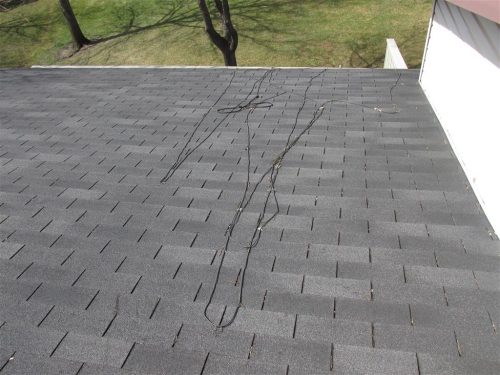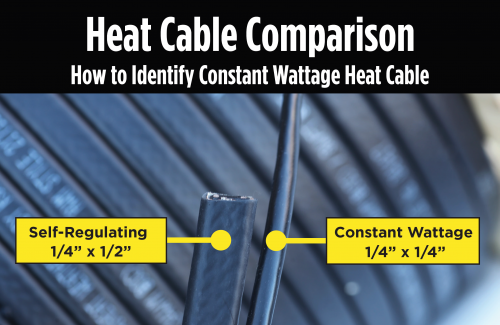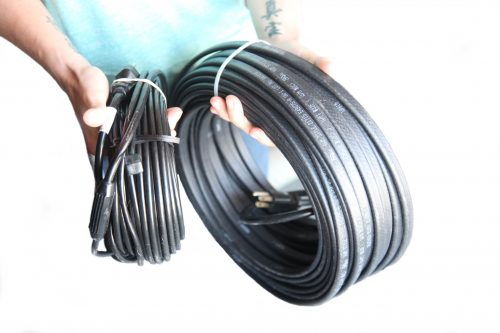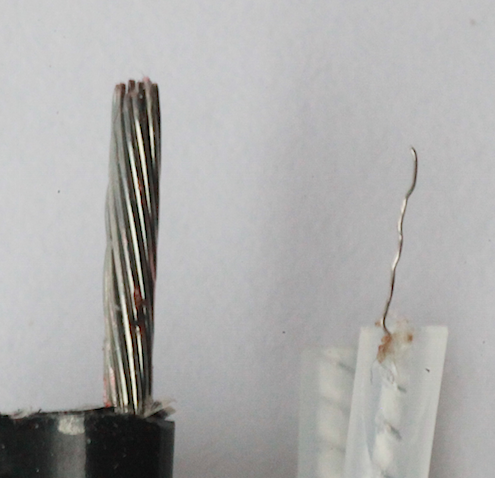This is a guest blog post by Steve Kuhl of Radiant Solutions Company. This is the second in a three-part series.
Over the past 30 years, I’ve been asked countless times if heat cables are a good solution or a bad solution for ice dams. My answer has always been, “Yes”. They are a great solution when you use the right cable and a bad solution if you don’t. Heat cables are a controversial topic in the field of ice dam prevention for good reason. They can be inefficient, short-lived, ineffective and even pose a fire hazard in some situations.
But to be clear, all of these issues relate to installations involving a low-quality class of cables known as ‘Constant-Wattage’, which are usually bought on Amazon or at big-box retailers and installed by less-than-professional hands. Constant-wattage cable gets its name from the fact that–unlike self-regulating cable–it does not automatically adjust its energy consumption with changes in outdoor temperatures. It is hot, hot, hot, 100% of the time when plugged in. There are many other dubious distinctions described below.
Sadly, constant-wattage heat cable is the most widely used roof deicing cable in the country, accounting for roughly 90% of all residential installations and nearly 100% of all complaints. Based on my many years of experience in ice dam prevention and residential construction, my opinion on constant-wattage cable is clear: It is better to not install anything than to use these products on your home. This explains why 60% of the heat tape installations we do in the Minneapolis area involve tearing out constant-wattage and replacing it with self-regulating cable, even on systems less than a year old. Bummer.
Quick facts about constant-wattage heat cable
Cost: A 100-foot constant-wattage cable will cost you around $75 whereas a self-regulating cable of the same length will be closer to $350. Ultimately, being cheap is the only short-term advantage constant-wattage cable has over self-regulating cable. Self-regulating cable is far cheaper over the long run when lifespans and energy consumption are factored in. If the cable feels very affordable, it is probably because it’s cheap.
Dimension & Brand Names: How does the average person tell the difference between self-regulating cable and constant-wattage cable? Here are a few quick tips. Identifying constant-wattage cable visually is easy. It’s normally black and round, measuring about ¼” in diameter and is usually sold under the brand names of Frost King, EasyHeat, Wrap-On or Heat-It.
Constant-wattage cables are typically the only option at local hardware stores both large and small. In contrast, self-regulating cables are normally ¼” x ½”, similar in shape to standard Romex® wire used in American homes. For all of our installations, we use Heat Tape Pro, a commercial-grade self-regulating heat cable that carries a five-year manufacturer’s warranty.
Performance & Limitations: A quick review of the manual and marketing materials will tell you quite a bit about constant wattage cable including these crucial limitations that few people are aware of:
- Constant-wattage cable will operate effectively when it’s warmer than 15 degrees outside.
- Constant-wattage cable can not be used on metal roofs, rubber roofs, wood roofs, flat roofs, slate roofs, tile roofs, synthetic roofs or roofs with gutter guards.
- Constant-wattage cable can’t overlap or touch itself at any point on the installation. If it does, it can burn out, overheat and/or start on fire.
- Combustibles such as leaves and pine needles to be cleared away from constant wattage cables to reduce the risk of fire.
- Constant-wattage cables can not be repaired if damaged.
- Constant-wattage cables only carry a one- to two-year warranty.
- Constant-wattage cable is not effective at temps lower than 15 degrees and can make ice dams worse if used below that threshold.
- Constant-wattage cable can’t touch any metal on your roof including valley flashings, gutters, plumbing flashings, and skylights unless that metal is electrically grounded by a licensed electrician.
Quick Facts About Self-Regulating Heat Cable
Self-regulating heat cables were originally developed over 50 years ago for use in arctic oil fields to prevent pipelines from freezing. It’s a robust technology with many years of proven effectiveness. It has a special conductive core that asks for more energy in response to cold and less when temperatures are warmer. In other words, it ‘self-regulates’. Here are some benefits to self-regulating heat cables:
- Self-regulating cable can overlap itself without risk of shorting out and never overheat.
- Self-regulating cable can be used on any roofing material or slope including asphalt, metal, rubber, wood, synthetics and flat roofs.
- Self-regulating cable will not start leaves or pine needles on fire.
- Self-regulating cable has an expected lifespan of ten years.
- Self-regulating cable can touch metal objects such as gutters and gutter.
- Self-regulating cable can be repaired in the field and modified with splices to accommodate any design.
- Self-regulating cable adjusts its energy consumption in response to outdoor temperatures.
- Can be installed quickly using Grip Clips which eliminates the need to put nail holes through the roof system.
Heat Tape and Ice Dam Prevention: Some Final Thoughts
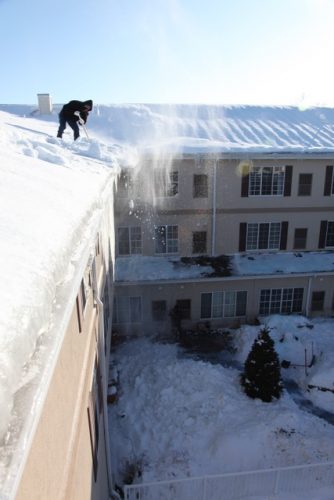 After all of these years in the ice dam, roofing and remodeling industries I still find myself coming back to this natural law in home maintenance: The solution is always about the budget. If you have a lot to spend you will choose one path, if you have a tighter wallet you will choose another. In terms of ice dams, I’m afraid there aren’t always ‘cheap’ solutions. Homeowners must sometimes choose from the lesser of three evils: 1) Spend a lot on architectural enhancements, 2) Spend a lot on professional roof shoveling or risk a lot doing it themselves or, 3) Spend a fair amount on heat cables. The average self-regulating heat cable system we install in the Minneapolis area runs between $1,000 and $2,000.
After all of these years in the ice dam, roofing and remodeling industries I still find myself coming back to this natural law in home maintenance: The solution is always about the budget. If you have a lot to spend you will choose one path, if you have a tighter wallet you will choose another. In terms of ice dams, I’m afraid there aren’t always ‘cheap’ solutions. Homeowners must sometimes choose from the lesser of three evils: 1) Spend a lot on architectural enhancements, 2) Spend a lot on professional roof shoveling or risk a lot doing it themselves or, 3) Spend a fair amount on heat cables. The average self-regulating heat cable system we install in the Minneapolis area runs between $1,000 and $2,000.
My advice to anyone considering heat cable for ice dam prevention is to either install a high-quality, self-regulating heat cable or skip it altogether. Constant wattage heat cable is a total waste of money. Worse, it can create a false sense of security for people who have most likely already had a bad relationship with ice dams in the past.
Next week I will be writing a follow-up post that discusses how to install a long-lasting heat cable system, including design, materials, expected costs and installation tips.
Related post: Should you install heat cables to prevent ice dams?

